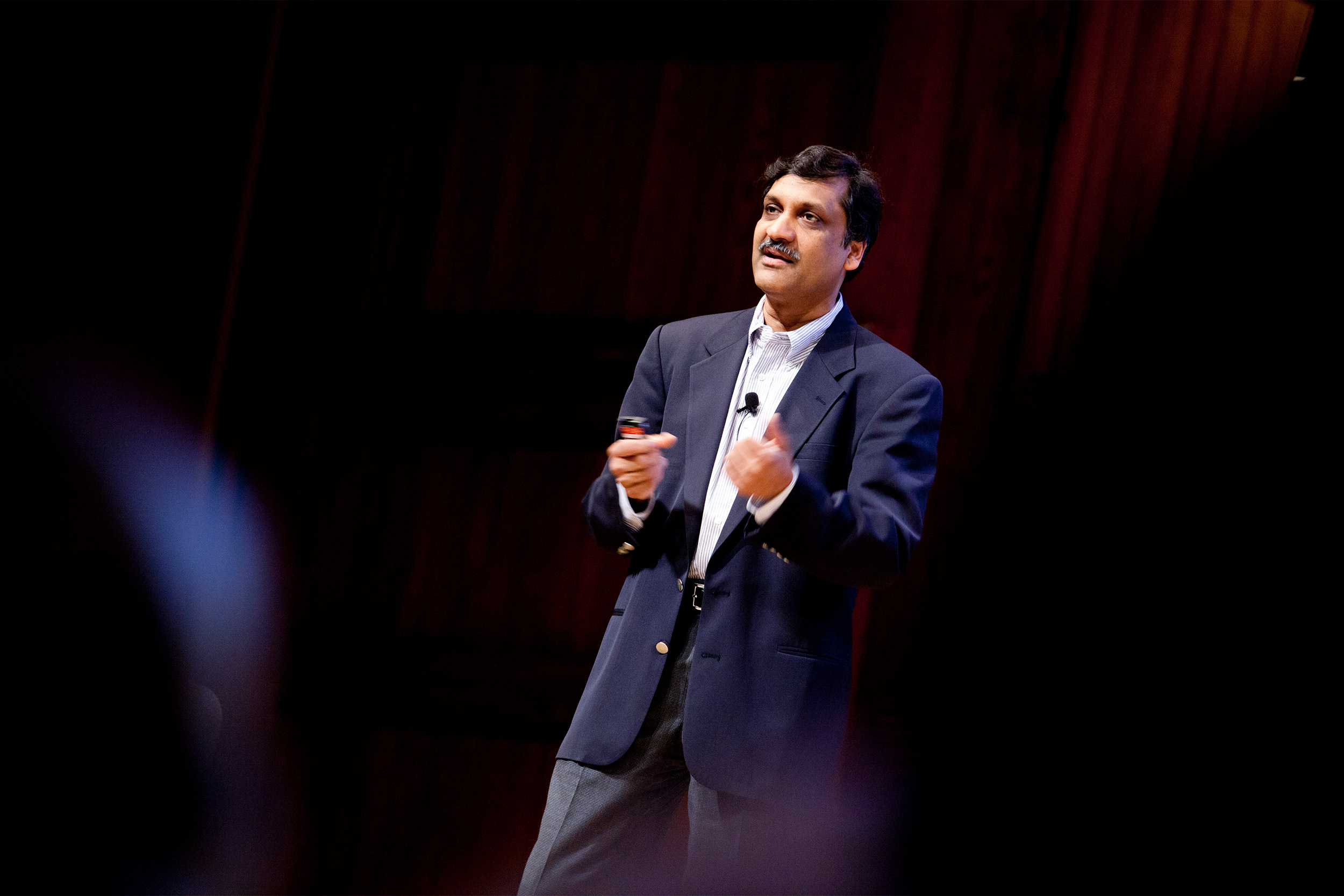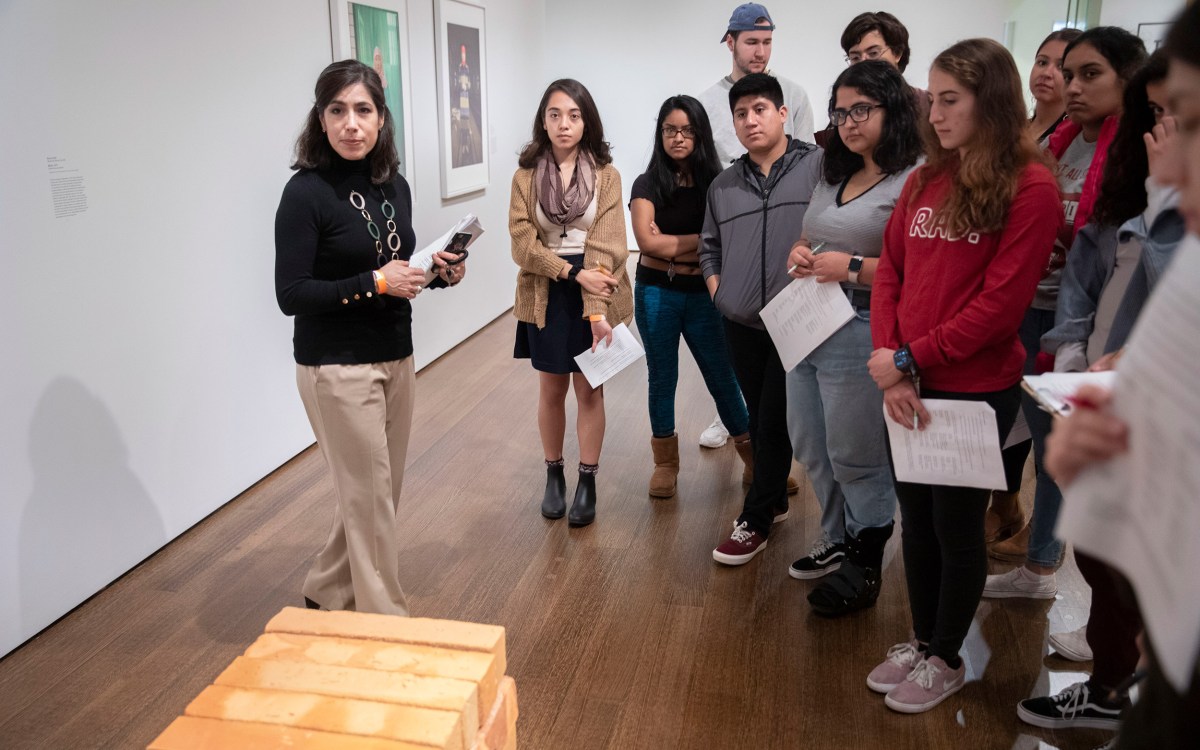
Kris Snibbe/Harvard file photo
Insights into online learning
Pioneering initiative edX offers guidance and support as colleges sort out fall plans
Online learning is decades old, but few students, teachers, or administrators had personal experience with it before the rise of the pandemic in March, when the entire American education system was forced to rush online. Pretty much all agree the results were mixed, at best.
Now, with COVID-19 surging in parts of the country, colleges and universities are preparing for fall, struggling to find a balance between ensuring the health and safety of teachers, students, and staff while providing a robust education experience. As of July 27, about 49 percent of colleges are planning in-person classes, 13 percent (including Harvard) are planning to remain online, and 35 percent are looking at hybrid models, according to the Chronicle of Higher Education’s updated listing of 1,260 colleges. But the situation has been and will likely remain pretty fluid.
Anant Agarwal, founder and CEO of the pioneering online initiative edX, created by Harvard and MIT, prefers the hybrid model. In fact, he predicts in a recent article published via LinkedIn that combining live and online classes could become a way forward not just in the pandemic era but beyond as it offers tremendous flexibility for students and can be tailored to the needs of various programs and institutions, citing research edX did at MIT.

According to Nina Huntemann, edX vice president of learning, “We are hearing that many schools, including our partners, are attempting some level of in-person (hybrid or blended) instruction in the fall. However, as we’ve seen COVID cases rise around the country, we should be prepared for the possibility of moving back to teaching fully online. Now that educators have a bit more time to prepare for online instruction (versus the abrupt move in March), we’re encouraging them to really think about what learning and experiences have to happen in person.”
Increasingly, schools have been tapping into the expertise of edX, which was founded in 2012 with a goal of democratizing higher education by offering free, college-quality classes called MOOCs, which stands for massive open online courses.
“My goal as edX CEO is to continue to share our expertise and resources with universities and schools around the world,” Agarwal said.
EdX worked with its partner schools last spring to assist in the initial transition, hosting a series of webinars and creating a course on “Pivoting to Online Learning.” During a recent Virtual Forum event, one partner school, the National University of Singapore, shared key learning it took from the previous SARS and H1N1 flu epidemics and are applying to this pandemic.
Education is bound to continue changing in the fall, as different colleges adopt varying degrees of online learning, Huntemann said. “The top concern among faculty seems to be, ‘How do I engage my students in an online setting?’ So much of what we take for granted and don’t even think that much about, disappears when you leave the classroom setting and you have to start being more deliberate about it,” she said.
For instance, she noted, many students depend on the few moments of casual interaction they might get with a professor before the class begins. “I would always walk into a lecture hall a few minutes before class starts. I found that was absolutely crucial to the learning experience. But there’s ways of getting around that — like you can set up your Zoom or Skype time a little early, or stay afterwards.” Likewise, both teachers and students can prerecord questions and answers when time zone differences make live chat impossible.
The company saw a major spike in registration, with 5 million new users in April alone — equaling the number who joined in all of 2019.
Some colleges and students have looked to edX as a way to enhance or supplement course offerings. The company saw a major spike in registration, with 5 million new users in April alone — equaling the number who joined in all of 2019. According to a survey that edX took among its users, most were looking to make the most of free time or to increase work-related skills. But a substantial number, nearly 17 percent, were students who were supplementing their education.
Though edX’s MOOCs are primarily noncredit courses, some partnering colleges are allowing them to be used for credit. “MOOCs for credit became possible because the quality of education provided was recognized by universities as credit-grade,” Huntemann said. “The change we have seen recently is not necessarily an increase in courses being created for credit — that activity continues — but instead increasing numbers of existing noncredit courses being applied to credit programs. A number of edX partners looked to their own and peer institution courses on edX during the quick move to remote learning as partial or full credit-eligible experiences for their students.”
Even after the pandemic ends, Agarwal believes that blended learning will continue. “My prediction is that by spring of 2021 you will see us rubber-banding back [to live classrooms], but never back to zero. We’ll see students coming back to campus but still using the online modality. A lot of universities were unprepared for this but frankly, [other schools] were better prepared because of [edX branches] HarvardX and MITx.”








